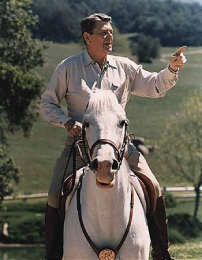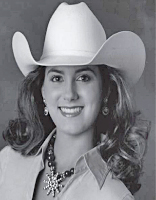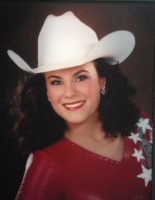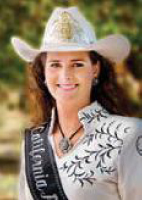The first member clubs were as follows:
January 2, 1942 Santa Clara County Horsemen’s Association
January 16, 1942 Sonoma County Riding and Driving Club
February 19, 1942 Sonoma Cavaliers
February 19, 1942 Sonoma County Trail Blazers
February 19, 1942 Santa Cruz County Horsemen’s Association
March 28, 1942 Sacramento County Horsemen’s Association
June 30, 1942 Sacramento County Mounted Sheriff’s Posse
July 15, 1942 San Francisco Horsemen’s Association
These clubs were referred to as the “Eight S’s” and were the foundation of this new statewide organization whose sole purpose was to serve the horsemen of California.
C.S.H.A. was formed on March 3, 1942. There are twenty geographical regions, currently three are inactive. The Regions are within three areas; Northern, Central, and Southern California. C.S.H.A. represents the pleasure horse industry and pleasure horse owners. In the beginning C.S.H.A. was not divided into Regions, but after realizing that the organization would be easier to organize in smaller groups the areas and regions were developed to make the programs more manageable.
In 1946 George H. Cardinet, Jr., a.k.a. “the Father of the California Trail System”, is credited with having mapped and routed more than 200 miles of trails throughout the East Bay region.
Also in 1946, the first C.S.H.A. “Blue Ribbon” horse show was held in Santa Barbara in conjunction with the Association’s annual convention. The show was for C.S.H.A. members only. This practice continued through 1958, where at Paso Robles there were 336 entries, several years prior to this the shows averaged about 330 entries. Pressure from exhibitors, trainers, and horsemen in general, brought about the change to its becoming an open show, and the 1959 open show, held in Turlock was an immediate success as the entries were over 1000. A year later C.S.H.A. began accepting individual memberships.
At the 1963 C.S.H.A. Convention and horse show held in Fresno, members of the Association found that holding the horse show at the same time as the Convention was just not feasible since many members and Delegates were involved with the show as well. Consequently, the following year the horse show became an entity in itself and was staged in Santa Rosa.
For many years the show was held alternately in the South and then in the North, which proved to be confusing to exhibitors because there were instances when a show would be switched from one location to another due to various problems. For example, when the show was held in Palm Springs in 1951 a sand storm blew in, completely halting the show when visibility was cut to less than 50 feet. With the changes in location, show management also changed and in many cases the new manger would not be aware of the problems that existed the previous year.
In 1966 at the annual C.S.H.A. Convention the E/W high point program was introduced. It was originally offered as a youth program, but was later expanded to include amateur adults. The show was held at the Sonoma County Fairgrounds in Santa Rosa from 1966 through 1986. From 1970 through 1972 the entries were 6181, 6907, and 8600 respectively. Many believe the high number of entries was due to the fact it was in the same location for so many years, as well as the fact that Gymkhana was offered for the first time in 1970. At times portable stalls were brought in to accommodate the high number of entries after the permanent stalls were filled. The horse race track was divided into several arenas for the Horse show (now known as the Show of Champions) to assist the week long event run smoothly.
The first Committee to be formed was the Equestrian Trails Patrol program (ETP). The primary purpose for this program was to create a friendly relationship with both the State Park and local officials by being an extra set of eyes and ears reporting conditions of the trails, especially after stormy weather, as well as admonishing other equestrian trail users on being aware of the State trail rules. The Program today is still very active in several Regions, some as individual riders while others are groups designated as volunteers as State park assistants.
One of the important organizers of the ETP was C.S.H.A. Past President George Dean, who was also a member of San Mateo Horsemen’s Association. In 1967 he with others went to Sacramento and presented the Governor, who was an avid horseman, with an honorary membership in C.S.H.A. and also an Equestrian Trails Patrol member. The Governor would later become the 40th President of the United States, Ronald Reagan.
In 1971 an Endurance Riding committee was started when C.S.H.A. recognized the importance of distance riding and horsemanship. An Endurance ride is a competition to test the speed, endurance, and ability of the horse.
The first Mariposa 50 Ride was held in 1977 by locals Chester & Gloria McWilliams and Bob & Lorna Webb. The ride took place in the
Sierra National Forest in the Jerseydale area as well as across private land. C.S.H.A. sanctioned the ride of over 100 riders.
In 1979, the ride was sanctioned by C.S.H.A., American Endurance Ride Conference (AERC) as well as the Inter-National Arabian Horse Association, (IAHA). This was the first year the 25 mile ride was added with the 50 mile ride. Since this was an IAHA Championship Ride, they presented two saddles and many awards to the top ten riders.
The Crescent Arabian Association was very active in Mariposa at that time and Al Dunn came up with the idea to change the name of the ride to “Run for the Gold” as gold from Mariposa was given to the first 5 riders in the 50 miler weight divisions. Ron Theodore managed the ride from 1980 to 1985, when his brother Rich took the helm until 1988. The ride then had a 10 year hiatus until 1998 when the Theodore family started it up again.
Other important key events in C.S.H.A. History include:
- In 1968, George H. Cardinet, Jr. was invited to the white House for the signing of the National Trails System Act, by President Johnson to recognize him for his accomplishments.
- 1969 C.S.H.A. Convention adopts the Charitable Trust by Resolution to promote education through C.S.H.A., its members, and the Equestrian Community by holding, husbanding, and disbursing funds for C.S.H.A. programs and outside groups.
Prepared & Compiled in 2008 by Kirk Siedentopf Region 1 President
Contributions by 2008 Royalty Contestants*, Jack Abrahams, Pat Chappell, Sydney Cutting, Bev Hardwick, Jean Leonard, Virginia Nichols, Richard Theodore, Ed Rom, Linda Quattlebaum, Lorna Webb, Paulette Webb
*2008 Royalty Contestants Speech topics were CSHA History related and State Chair Linda Jacobsen mailed in all of their speeches.





